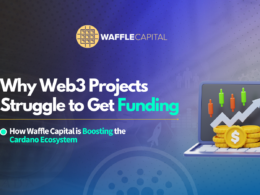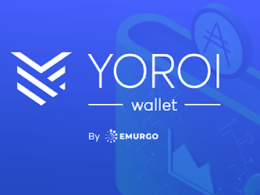This article is the first of a 4-part article series that covers blockchain generations and why Cardano is considered a third generation blockchain.
Ever since the outset of blockchain technology, the space has received constant growth and evolution, with significant economic participation as evidenced by the high adoption rate and ever-emerging use cases beyond digital payments. The progression can be tracked by example, from Bitcoin, the pioneer of this technology, to Ethereum, where smart contracts were introduced, and lastly, to Cardano, an enterprise solution that powers Web3 in a sustainable and scalable ecosystem.
According to the records, as of 2021, Statista has it that many companies are targeted to secure information exchange through blockchain technology, ranking it as the top use case. In cascade, other application areas are digital currencies, asset tracking and management, digital identification, regulatory compliance, finance flow traceability, digitization of documents and records, licensing and credentials, asset tokenization, product supply chain routing, trade processing, contracts management, internal controls, and anti-counterfeiting. With the numerous use cases, there’s a need to understand different blockchain generations, how they fit into the ecosystem, and which would be the most beneficial, no matter your unique needs, whether at personal or business levels.
In this article, we will briefly overview blockchain generations and introduce Cardano as a third blockchain family. We’ll explore its unique features from a technical perspective, examine its advantages over its predecessors, and spotlight real-world use cases. Lastly, we will discuss the challenges and criticism Cardano faces and tap into its future. By the end, you will be well-versed in its innovations and impact on the overall blockchain and cryptocurrency industry. Let’s delve in.
An Overview of Blockchain Generations
Though not the first build-up of decentralized digital currency but rather the most successful implementation, Bitcoin debuted in 2009 and earned the place of forerunner to all cryptocurrencies. As a base model, blockchain is the technology that runs the distributed public ledger, a digital record, or, put differently, the verification mechanism that substantiates individual transactions. Behind this innovation, Bitcoin is built on two goals: financial privacy and autonomy in transactions. Bitcoin’s white paper describes it as peer-to-peer (P2P) electronic cash. This system is the first generation of blockchain technology focused entirely on decentralization.
The second generation, blockchain 2.0, is all about programmable distributed trust infrastructure with extensible capabilities and more on-chain utility. Rather than entirely focusing on the decentralization of payments, blockchain 2.0 broadens the target to markets. This entails including more complex operations like smart contracts and decentralized applications (dApps). Smart contracts are digital agreements embedded in lines of code used to automate actions between parties. With this evolution of blockchain technology, users are able to exchange more asset types, including certificates, responsibilities, rights, artworks, cars, and even intellectual property. A good example of this network is Ethereum.
Blockchain 3.0 builds on preceding generations by addressing their limitations. In terms of scalability, this generation uses more efficient consensus mechanisms and architectures to facilitate a high volume of transactions cost-effectively. Interoperability has also been possible with the advent of blockchain 3.0, where data and assets move seamlessly between networks to create a more connected digital ecosystem without intermediaries. Smart contracts in this family are improved, offering more flexibility and customization. Security and privacy have also been enhanced to promote confidentiality and data protection without sacrificing transparency. Moreover, the design rationale for this creation adopts energy-efficient mechanisms to promote sustainability and environmental friendliness. In this case, Cardano is a solid example. Into the use cases, Cardano leads with enterprise adoption in a wide array of applications. These include supply chain management, asset tokenization, identity verification, and more.
Cardano as a Third-Generation Blockchain
To understand Cardano and how it all started, here’s a quick video by Whiteboard Crypto:
Cardano, established in 2015 by Charles Hoskinson as an open-source blockchain, launched in 2017. Its native cryptocurrency is ADA. Unlike other networks, Cardano does not have a white paper; hence, it is the first network initiated through peer-reviewed research and developed on an evidence-based structure. Simply put, scientists all around the globe work on research, independent academic and industry specialists validate the research results, and validated research outcomes are passed to developers who write the code and correctly implement it using approved mathematical techniques.
Aimed at restoring trust in global payments, Cardano creates a secure and transparent foundation for individuals, governments, and enterprises to thrive using inclusive technology. This forms the base for achieving its key objectives (addressing scalability, interoperability, sustainability, and governance challenges in blockchain tech). As such, this innovation is characterized by the following elements.
- Proof of Stake and Ouroboros — The Cardano decentralized network is powered by a peer-reviewed and secure Proof of Stake (PoS) protocol. It is built on comprehensive research, distributes power and control fairly, and allows Cardano to scale without sacrificing security.
- Evidence-based development — Rooted in science, Cardano maintains a high development standard, where project research is challenged, mathematically modeled, tested, and audited. In turn, the codebase provides unmatched levels of assurance.
- Security — Cardano has unparalleled security, as the Ouroboros is secure against attacks or bad actors, promoting a trustless world. All transactions and interactions are transparent, immutable, and securely validated using multi-signatures built on unspent transaction output (UTXO) models.
Scalability and sustainability — While maintaining low energy consumption, Ouroboros allows Cardano to scale efficiently to meet global demands. By adopting several approaches, such as multi-ledger, side chains, and parallel transactions, Cardano strikes a balance between performance and sustainability.
Incentivized participation — Cardano has an active community that develops the project through open participation. Whether as a stake pool operator or delegator, the project has reward mechanisms for ensuring the longevity and health of the network. ADA holders have the power to vote on enhancement proposals for future growth tailored to user needs.
Next Steps:
If you haven’t already, check out the second part of this article series that covers the unique features that make Cardano a third generation blockchain.










